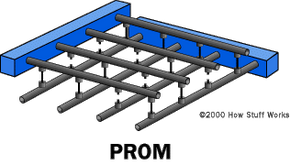EEPROM and flash memory operate on similar principles, utilizing floating-gate transistors to store data.
Both EEPROM and flash memory offer non-volatile storage solutions, making them suitable for applications requiring frequent data updates or modifications, such as storing system settings, firmware and user data in various electronic devices.
Programming EEPROM Chips
In EEPROM, data is stored by charging or discharging the floating gates of individual memory cells through electrical programming.
Unlike EPROM, EEPROM does not require exposure to UV light for erasure; instead, a high-voltage signal is applied to selectively remove the stored charge from the floating gates, allowing for multiple write-erase cycles.
Programming Flash Memory
Similarly, flash memory stores data by trapping or releasing electrons in floating gates, but it operates at a larger scale, organizing memory cells into blocks and sectors.
Flash memory employs a mechanism called tunneling to move electrons in and out of the floating gates during programming and erasure, respectively. Flash memory is designed to perform block erasure and programming, which makes it more efficient for mass data storage and retrieval.
We created this article in conjunction with AI technology, then made sure it was fact-checked and edited by a HowStuffWorks editor.

